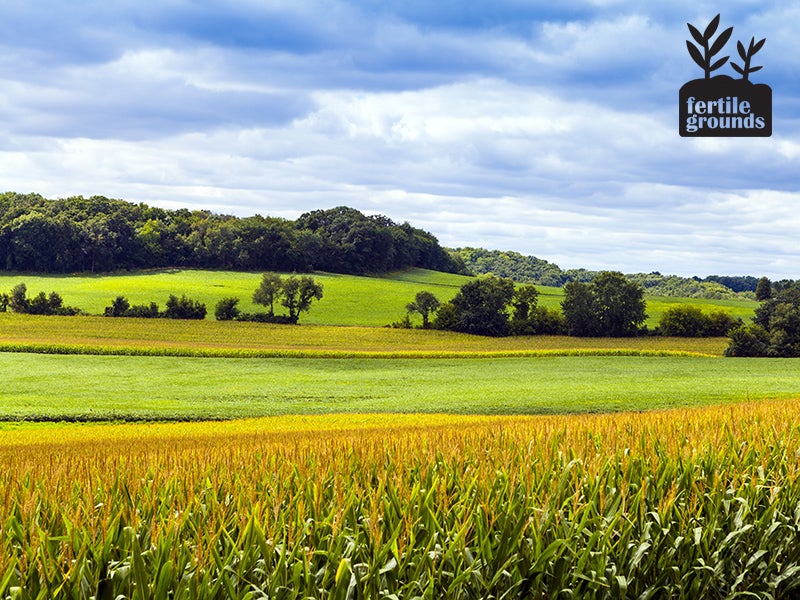One Toxic Pesticide Is on the Way Out—With Many More to Go
To grow food without poisonous chemicals, you need to buck the system.

This page was published 9 years ago. Find the latest on Earthjustice’s work.
While Earthjustice has been fighting to ban a widely-used, brain-damaging pesticide called chlorpyrifos, some farmers are already finding ways to do without it—and not just chlorpyrifos, but even the next toxic chemical that springs up to replace it. As farmers rediscover natural ways to control pests, and environmental advocates continue to drive down the use of the most harmful chemicals, the two movements could bring about a fundamental change in how we feed our families.
Chlorpyrifos is one of the most widely used pesticides in America. It also causes irreversible brain damage in children, one of several reasons this dangerous chemical may soon be pulled off the market. If the EPA does its job and chlorpyrifos is indeed on the way out, that’s great news. But all too often, one toxic pesticide simply gets replaced with another. That’s how our industrial agricultural system works. Widespread, intensive use of toxic chemicals is the default setting for food production. To grow food without poisons like chlorpyrifos, you need to buck the system.
Many farmers are already using techniques to make farming safer and more sustainable. I have had the chance to see some of these techniques up close, as well as the chance to hear about them from others. In addition to my environmental lawyer role, I also help manage a coffee farm in Costa Rica that is Rainforest Alliance Certified where we try to put some of these techniques into practice.
Right now, a destructive fungus known as “coffee rust,” spurred by the changing climate, is severely harming coffee plants and lowering harvests throughout Latin America. Many farmers have been forced out of business. Those who can afford it are using toxic (and expensive) fungicides to combat coffee rust. On our farm we’re experimenting with switching to coffee varieties that are naturally resistant to the fungus.
We’ve also avoided other chemical pesticides through a technique called grafting. There’s one coffee species that’s resistant to a pernicious local parasite, but it doesn’t yield very tasty beans. So we’ve grafted higher quality varieties onto the rootstock of that more robust variety in order to get plants that are parasite-resistant below ground and tasty above. While the technique is more expensive, it’s worth it since coffee trees last perhaps 30 years.
Many farmers in the United States have reduced their reliance on chemical pesticides using techniques like these as part of a broader strategy known as “integrated pest management.” Rather than blanketing fields with poisons that are toxic to almost all living things, growers target specific pests using techniques that don’t require synthetic chemicals, such as beneficial insects that eat pests and traps designed to catch a particular offender. Chemical pesticides are a last resort, and in the case of organic farming, they are not used at all.
Some techniques have been used for thousands of years to maintain healthy soil and protect against pests. Today, most corn grown in America is genetically modified and planted alone over thousands of acres, relying on massive chemical inputs to control weeds and pests. But Native Americans traditionally planted corn, beans and squash together, a technique we now call intercropping, or crop rotation. Growing multiple crops in the same field, either at the same time or in sequence, disrupts the life cycles of weeds and pests, preventing them from gaining a foothold. Cover crops planted during the off-season to protect topsoil can also provide habitat for beneficial insects that eat pests.
Implementing techniques like these to avoid pesticides can be an uphill battle. It’s not easy to choose a different path when farm subsidies, crop insurance and other government policies all support industrial-scale, chemically intensive monoculture farming.
If we want to break free from dangerous pesticides like chlorpyrifos—and the next toxic chemical that will invariably replace it—we have to change the way we grow food. It’s not simple, but it is possible. We can grow food with fewer chemicals, and we can reduce the impact of our food system on people and the environment, from farm to table to disposal. And we must, for the sake of our health and the protection of the soil, water and climate that sustain us all.
Fertile Grounds is a blog series that examines the challenges and opportunities in ensuring access to healthy, sustainable and affordable food for all. We talk about the entire lifecycle of food—from seed selection and planting to consumption and disposal—because there is potential for improvement throughout. We’re informed by the expertise of our many clients and allies and by Earthjustice’s years of work to ban harmful pesticides, encourage sustainable farming methods, reduce pollution, support farmworker justice and promote a healthy relationship between farmers and communities.
Earthjustice’s Sustainable Food and Farming program aims to make our nation’s food system safer and more climate friendly.